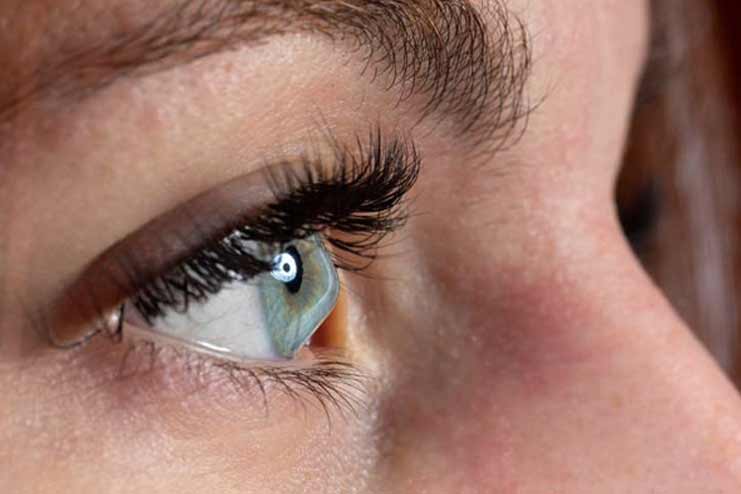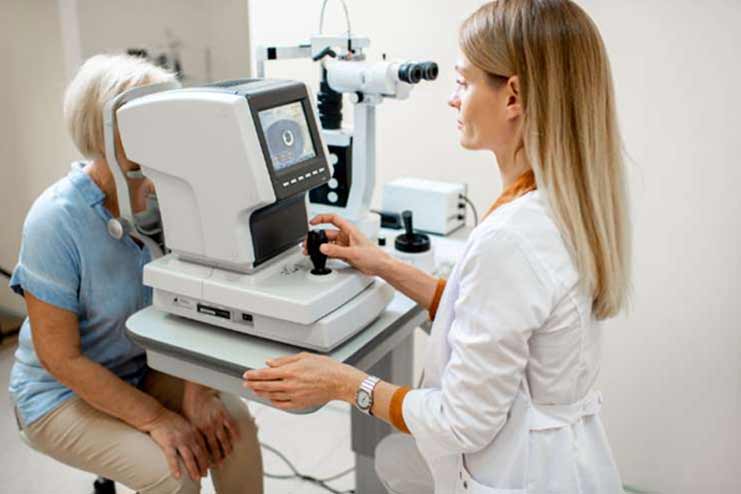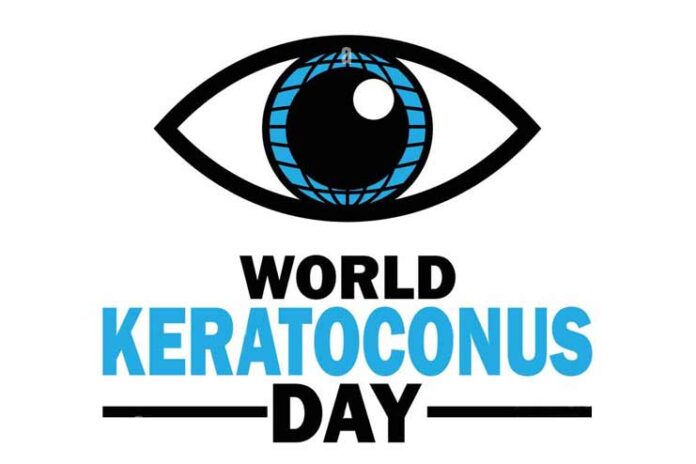Affiliate Disclaimer
Some links in this article are affiliate links. We may earn a small commission if you make a purchase through these links, at no extra cost to you. We only recommend products we find useful to our readersConsider viewing the world through a warped lens, which causes everything to appear foggy, distorted, and blurry. Many patients with Keratoconus live like this every day. As the illness worsens, it can significantly influence day-to-day activities, making reading and driving difficult. November 10 is the annual celebration of the World Keratoconus Day. The day aims to educate and support people with Keratoconus while increasing public awareness.
By teaching patients, friends, and family about Keratoconus on this World KC Day, we are promoting research and improvements in treatment options and increasing awareness. By coming together on this day, we can shed light on people’s experiences with Keratoconus and encourage a dedication to enhancing everyone’s eye health.
What is Keratoconus?

Cornea, the transparent window of the eye, can change form due to a rare eye condition called Keratoconus. This condition distorts light beams and impairs vision by causing the cornea to thin and swell into a cone-like shape. The precise causes of this illness are still mostly unclear, and it usually appears in adolescence or early adulthood. It is thought that both hereditary and environmental factors—such as excessive eye rubbing and UV radiation exposure—play a role in its development.
Global estimates of its prevalence range from 1:375 to 1:2,000, with younger populations having a significantly greater rate. Keratoconus occurs annually in about 50 to 230 people per 100,000, while experts estimate the rate to be 1.3 cases per 100,000 each year in Denmark. Ethnic differences play a significant role; a study conducted in the UK by Pearson et al. showed that the annual incidence of Keratoconus was 19.6/100000 in Asian communities and 4.5/100000 in Caucasian communities.
Keratoconus is challenging to manage. Rare or uncommon disorders like Keratoconus usually have less research and fewer therapy choices than prevalent diseases, which frequently have both. Even receiving a precise diagnosis can be challenging in some nations.
The Importance of Keratoconus Awareness
Keratoconus is a common eye condition, but because people are generally unaware of it, it is frequently underdiagnosed. Early signs, such as blurred vision or frequent changes in eyeglass prescriptions, are sometimes confused with less severe eye conditions. This misconception may cause people to put off getting the proper medical counsel, which could make the illness worsen untreated. Delaying treatment for Keratoconus can seriously damage vision and may require complex procedures, such as corneal transplants.
World Keratoconus Day promotes understanding of people with this eye ailment and awareness of it. People can seek treatment for Keratoconus by identifying its early symptoms, including corneal cross-linking, specialty contact lenses, or other measures that slow the condition’s growth. Educating the public, medical professionals, and optometrists about the early indications can improve outcomes for individuals impacted and speed up referrals to eye experts.
Additionally, raising awareness can promote additional keratoconus research, which will aid in creating new therapies and patient support systems. Events such as World Keratoconus Day are essential to raising awareness of the condition, promoting a feeling of community, and motivating group efforts to improve the quality of life for people with Keratoconus.
Understanding Keratoconus: Causes and Risk Factors

Even after decades of research, little is known about Keratoconus. Although the exact cause of Keratoconus is unknown, a person is thought to be predisposed to the condition from birth. Loss of corneal collagen is a common observation in Keratoconus. It could result from an imbalance between the synthesis of corneal cells and the breakdown of corneal tissue. A patient’s risk of acquiring Keratoconus is increased if they have a family history of the condition or if they have certain systemic illnesses, like Down syndrome.
Environmental variables exacerbating corneal thinning include exposure to ultraviolet radiation, long-term eye irritation, and even allergic eye illnesses. You often don’t have an eye injury or a condition that causes Keratoconus. Keratoconus patients usually rub their eyes, which may hasten the onset of the illness.
The idea that Keratoconus is solely caused by inadequate eye care or excessive screen time is a prevalent myth. Eye strain does not cause the illness but can exacerbate its symptoms. Another misconception is that Keratoconus can be fixed entirely with glasses; more severe instances frequently necessitate surgery or specialist lenses.
Keratoconus Symptoms
As the illness worsens, the symptoms of keratoconus might change in intensity. Early detection of the symptoms can significantly impact diagnosis and care.
- One or both eyes’ eyesight gradually deteriorates.
- Looking out of one eye and experiencing double vision.
- Seeing halos surrounding intense lights.
- Being light-sensitive, also known as photophobia.
- Having a progressively distorted vision. Straight lines may appear bent or curved to someone with distorted vision, and objects may not have their proper shape.
Understanding these symptoms can aid in early detection and prompt treatment of keratoconus. For more information on the symptoms and management of keratoconus, you can refer to resources such as the American Academy of Ophthalmology.
Diagnosis Of Keratoconus

An eye doctor will perform an eye exam and analyze your medical and family history to diagnose Keratoconus. Several specialized tests and procedures evaluate the cornea’s thickness, shape, and clarity to diagnose Keratoconus. Doctors use the following tests to diagnose Keratoconus:
- Eye Refraction: This test evaluates your eyes using specialized equipment. You can be asked to gaze through a phoropter, a device with wheels of various lenses. This tool aids in determining which combination provides the best vision for you.
- Slit-lamp Examination: A low-powered microscope allows the doctor to view the eye while focusing a vertical light beam on its surface. In addition to assessing your cornea’s form, the eye doctor searches for any more possible issues with your eye.
- Topography and Tomography: They offer comprehensive details regarding the cornea’s thickness and curvature, which aids in diagnosing diseases like Keratoconus. Maps produced by topography highlight regions with unusual forms or steepness, illustrating the cornea’s curvature. These maps feature several perspectives, including thickness distribution, posterior (back) elevation, and anterior (front) curvature. Doctors can more easily identify problems like astigmatism and other corneal abnormalities by employing these non-invasive procedures, which provide both a qualitative (visual) and quantitative (measured) understanding of corneal alterations.
- Keratometry: This test analyzes the cornea’s reflection after shining a circle of light on it, establishing the cornea’s fundamental form.
Treatment Options Of Keratoconus
Slowing the disease’s progression and providing the best possible vision correction are the two main goals of keratoconus treatment. In light of these objectives, the following summarizes the top therapies that have been effective in halting the progression of the condition and regaining visual ability:
- Corneal collagen crosslinking is a successful treatment for strengthening the cornea and preventing Keratoconus from worsening. This minimally invasive surgery has been used worldwide with excellent outcomes. To create a harder cornea that doesn’t protrude outward, use eyedrop medication and ultraviolet (UV) light from specialized equipment to strengthen the collagen links. Additionally, it may lessen the likelihood of requiring corneal transplant surgery in the future.
- You can correct visual impairment in the early stages of Keratoconus using soft contact lenses. However, depending on how rapidly the condition progresses, individuals may discover that they require regular prescription modifications.
- For individuals who aren’t getting the desired level of vision correction via soft contact lenses or eyeglasses, RGP, or rigid gas permeable contact lenses, are a great alternative. It frequently occurs as Keratoconus worsens and the corneal shape gets more distorted. These rigid lenses provide a smooth, light-refracting surface by vaulting over the cornea to enhance vision.
- Hybrid contact lenses combine the durability and sharper vision correction of hard contact lenses with the comfort of soft contact lenses. Many individuals who struggle to wear hard contact lenses find hybrid lenses more convenient and pleasant.
- Scleral lenses are a great choice for people with Keratoconus. RGP lenses, known as scleral lenses, are precisely measured to fit each individual eye. A sterile saline solution that fills the gap between the corneal surface and scleral lens continually moisturizes and shields the cornea while repairing its imperfections.
Preventative Measures For Keratoconus
Living with Keratoconus necessitates using techniques to control symptoms and make deliberate changes to daily activities. Most people with Keratoconus can maintain their daily lives without significant disruption. Here are some possible treatment options:
- You can correct your vision with prescription glasses or contact lenses. Specialized lenses, including scleral lenses, offer improved comfort and vision correction for people with more severe cases.
- You will undergo routine eye exams to ensure you receive the proper care and track any changes in your vision. If you encounter difficulties, a wealth of tools and support is available to assist you in managing them.
- Managing allergies, reading in well-lit areas, and taking frequent breaks from screens can all help you cope with eye strain. Because eye rubbing might exacerbate the problem, it is essential to minimize it. Since stress is known to worsen eye issues, learning how to control it with meditation or light exercise can also help symptoms.
- The key is to keep your eyes healthy. To support corneal health, wear sunglasses to protect your eyes from UV radiation, drink enough water, and eat a balanced diet high in vitamins and omega-3 fatty acids.
Celebrating World Keratoconus Day
World Keratoconus Day is celebrated on November 10 every year to increase awareness of Keratoconus and its effects on people’s lives. The National Keratoconus Foundation (NKCF), an educational initiative of the UC Irvine Gavin Herbert Eye Institute, funds it. The day focuses on teaching and supporting those affected by keratoconus while also increasing awareness about the condition.
Since its inception, World Keratoconus Day has developed into a global occasion that brings together patients, medical experts, and advocates to advance knowledge, research, and education.
Experts provide the most recent developments in diagnosis and treatment via webinars organizations host. To help identify the condition’s early symptoms, eye clinics may provide screenings at no cost or a reduced cost. To support patient access and research, several organizations also host fundraising events, workshops, and charity runs.
In addition to raising awareness, these events empower people with Keratoconus by providing a forum to interact and talk about their experiences. By taking part in these events, everyone may help create a future where Keratoconus is better understood and treated.
Learn more and participate by visiting https://nkcf.org/world-kc-day-contest
Additionally, there’s a webinar with Dr. Uri Soiberman, MD of the Johns Hopkins University / Wilmer Eye Institute, and Dr. Evan Kaufman, OD, director of the optometric services at the University of Virginia School of Medicine, to spread education on Keratoconus.
Conclusion
World Keratoconus Day, observed on November 10, is essential to increase awareness of this frequently misdiagnosed eye ailment. Early diagnosis, improved care, and assistance for those impacted are all encouraged. By dispelling myths and educating people, we can give keratoconus sufferers the required resources. We can raise awareness of this illness, help those impacted, and ensure that more people can receive the assistance they need if we work together.
References
- https://www.livingwithkeratoconus.com/keratoconus-community/world-keratoconus-day
- https://www.keratoconusgroup.org/2024/10/world-keratoconus-day.html
- https://www.pacehospital.com/world-keratoconus-day
- https://pmc.ncbi.nlm.nih.gov/articles/PMC10318194
- https://rarediseases.org/rare-diseases/keratoconus
- https://openophthalmologyjournal.com/VOLUME/12/PAGE/289/FULLTEXT
- https://www.pacehospital.com/world-keratoconus-day
- https://www.lakelinevision.com/raising-awareness-about-keratoconus
- https://pmc.ncbi.nlm.nih.gov/articles/PMC10391695
- https://www.mynewstouse.com/stories/world-keratoconus-day-aims-to-increase-awareness-about-this-progressive-eye-disease,37106
- https://www.mayoclinic.org/diseases-conditions/keratoconus/symptoms-causes/syc-20351352
- https://www.hopkinsmedicine.org/health/conditions-and-diseases/keratoconus
- https://my.clevelandclinic.org/health/diseases/14415-keratoconus
- https://www.guidedogs.org.uk/getting-support/information-and-advice/eye-conditions/keratoconus/living-with-keratoconus
- https://www.vision-institute.com/coping-with-keratoconus-strategies-for-managing-common-symptoms
- https://www.westoncontactlens.com/keratoconus-what-to-expect
- https://pmc.ncbi.nlm.nih.gov/articles/PMC10448050
- https://www.mayoclinic.org/diseases-conditions/keratoconus/diagnosis-treatment/drc-20351357
- https://pmc.ncbi.nlm.nih.gov/articles/PMC10511017
- https://www.aao.org/eyenet/article/diagnosis-and-management-of-keratoconus
- https://www.midwestmedicaledition.com/articles/world-keratoconus-day-promotes-awareness-and-early-treatment-of-degenerative-eye-disease
- https://www.lakelinevision.com/world-keratoconus-day-keratoconus-treatment-options
- https://www.mayoclinic.org/diseases-conditions/keratoconus/symptoms-causes/syc-20351352
- https://my.clevelandclinic.org/health/diseases/14415-keratoconus
- https://www.vision-institute.com/understanding-keratoconus-causes-symptoms-and-diagnosis/
In this Article



















